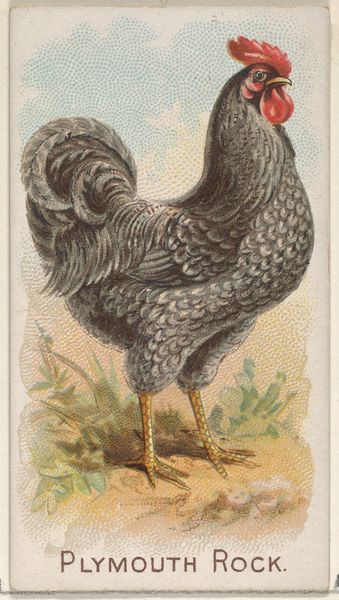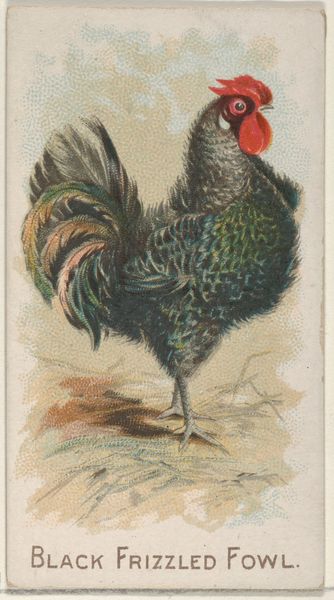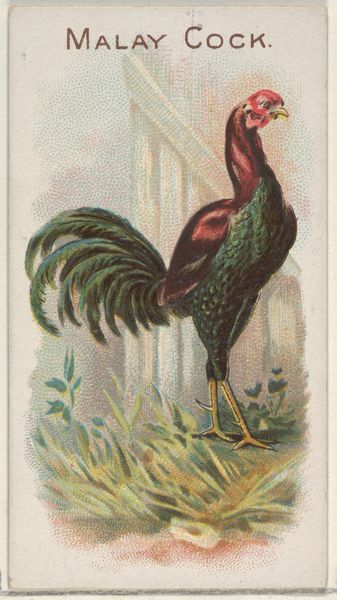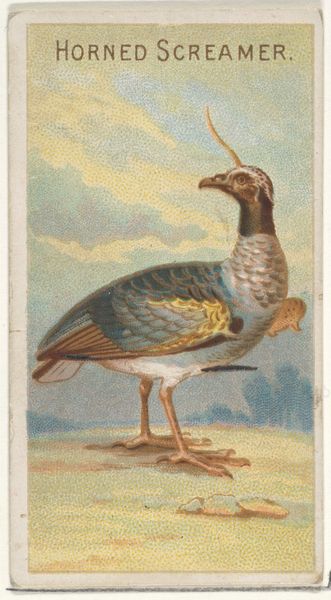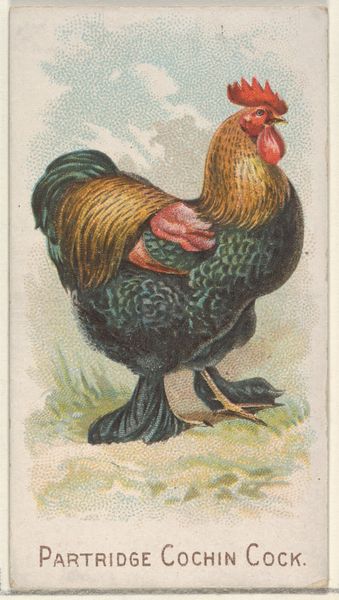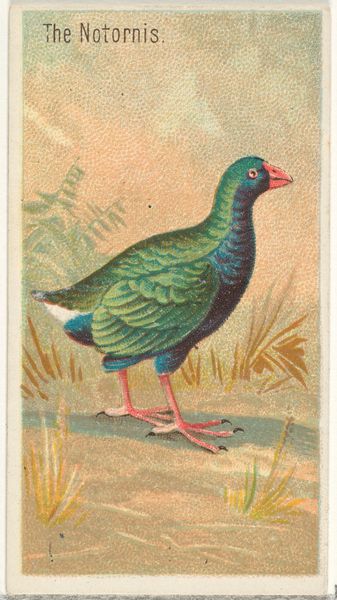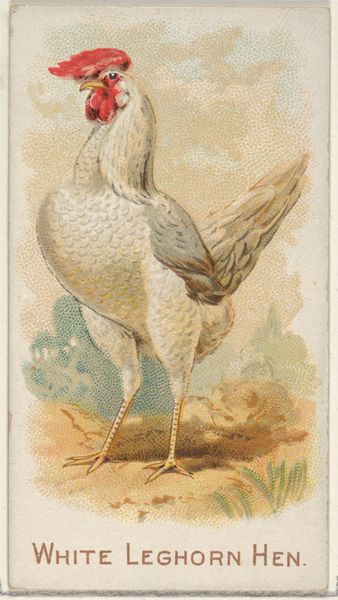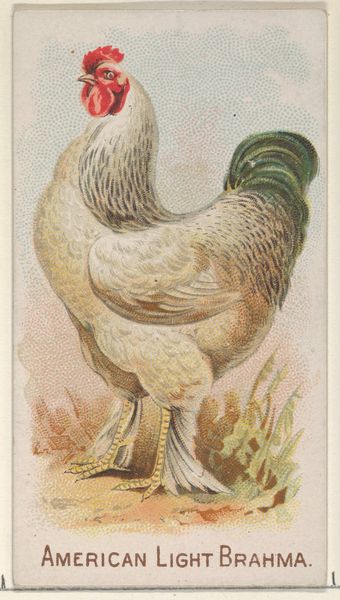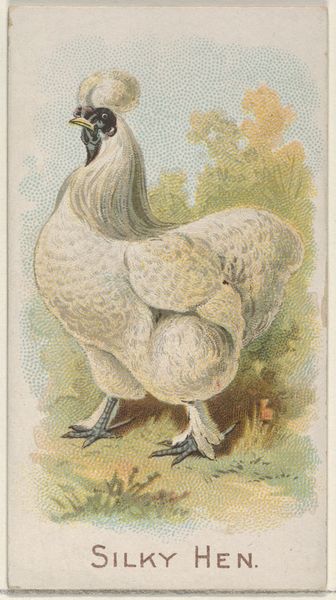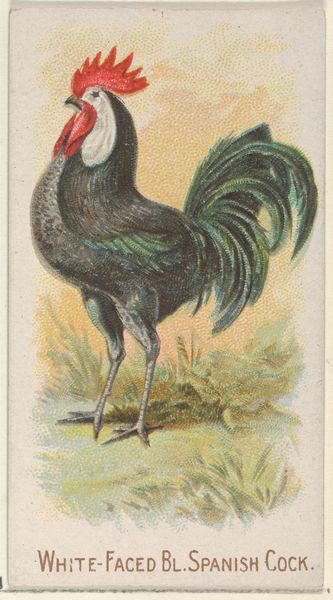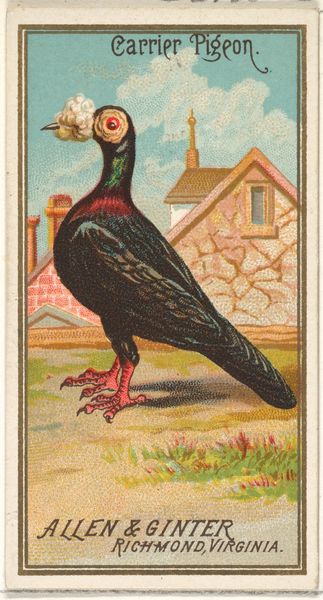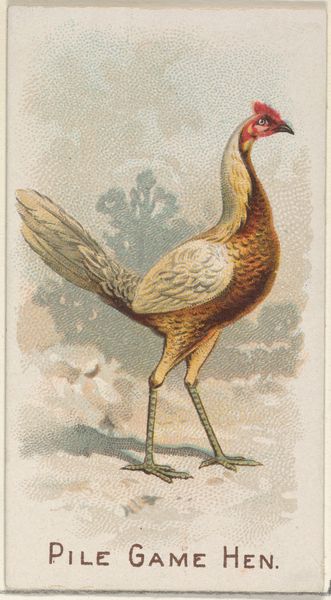
White-Faced Black Spanish Hen, from the Prize and Game Chickens series (N20) for Allen & Ginter Cigarettes 1891
0:00
0:00
drawing, coloured-pencil, print, watercolor
#
drawing
#
coloured-pencil
# print
#
watercolor
#
coloured pencil
#
genre-painting
Dimensions: Sheet: 2 3/4 x 1 1/2 in. (7 x 3.8 cm)
Copyright: Public Domain
Curator: Look at this charming image—it’s a coloured pencil and watercolor print from 1891. Part of the "Prize and Game Chickens" series by Allen & Ginter, it depicts a White-Faced Black Spanish Hen. Editor: It’s captivating! There’s a strange, almost ethereal quality to the light that bathes the hen. The artist uses subtle color shifts to suggest volume. How very odd, given the nature of the materials involved, which suggest something quite flat and commercial. Curator: Indeed, the contrast between the delicate rendering and its intended purpose as a cigarette card is striking. I wonder about the societal implications. This image would have been churned out en masse. What does this say about attitudes towards the working class, or even women producing these images for the Allen and Ginter brand? Editor: The means of production become quite evident on close viewing; a form of labor, this piece reflects, and a social structure of the era. The colors themselves—earthy browns contrasted with the glossy black—underscore this tension. Curator: Absolutely. And think about the chicken itself! It's not just any hen; it's a "Prize" chicken. This image reflects selective breeding, an intersection of agriculture and human intervention—a potent signifier of Victorian ambition to control and categorize the natural world. Editor: True. The formal aspects subtly support this. See how the strong vertical lines emphasize the hen’s upright posture? This lends a sense of importance and purpose to this prize fowl. The compositional choices elevate the chicken beyond simple livestock, reinforcing its status. It mirrors human ambitions of aspiration, not just utility. Curator: I see the value of reflecting on this piece beyond its form. It makes us consider our relationship with images of all types. Were people so focused on these details back in 1891, I wonder? It invites an engagement beyond that of pure design and aesthetics. Editor: Very true. Both levels are informative. The work offers different meanings through an examination of materials and form, as well as social and historical contexts. Thank you!
Comments
No comments
Be the first to comment and join the conversation on the ultimate creative platform.
